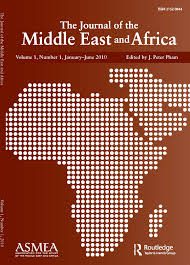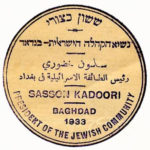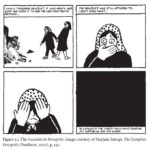Murtadha Ridha ~ Jewish Cemetery In Baghdad | مقبرة اليهود في بغداد
The Jewish Cemetery in Sader City in Baghdad – Iraq.
Filming and Editing: Murtadha Ridha / Iraq – Baghdad
Shmuel Trigano ~ The Expulsion Of The Jews From Muslim Countries, 1920-1970: A History Of Ongoing Cruelty And Discrimination
Jerusalem Center for Public Affairs. November 2010. Between 1920 and 1970, 900,000 Jews were expelled from Arab and other Muslim countries. The 1940s were a turning point in this tragedy; of those expelled, 600,000 settled in the new state of Israel, and 300,000 in France and the United States. Today, they and their descendents form the majority of the French Jewish community and a large part of Israel’s population.
In the countries that expelled Jews, a combination of six legal, economic, and political measures aimed at isolating Jews in society was instituted: denationalization; legal discrimination; isolation and sequestration; economic despoilment; socioeconomic discrimination; and pogroms or similar acts.
It is the custom to say that Zionism was responsible for this development. However, the region’s anti-Semitism would have developed even without the rise of the state of Israel because of Arab-Islamic nationalism, which resulted in xenophobia.
The fact that these events have been obscured has served in the campaign to delegitimize Israel, and therefore to a large extent, the same population that suffered this oppression. The fate of Palestinian refugees, their proclaimed innocence, and the injustice they endured form the main thrust of this delegitimization. The Jewish refugees have suffered more than the Palestinian refugees and undergone greater spoliations. However, they became citizens of the countries of refuge, especially Israel and France, while Palestinians were ostracized from the Arab nations.
Go to:
Lital Levy ~ Historicizing The Concept Of Arab Jews In The Mashriq
 Jewish Quarterly Review, 2008. As is well known, the long arm of the Arab-Israeli conflict reached far beyond the geographical borders of Palestine. Prior to the creation of the State of Israel in 1948, somewhere between 700,000 and 850,000 Jews lived in inveterate communities spread throughout the Middle East and North Africa. By the end of the century, all the historic Jewish communities of the region (with the partial exceptions of Morocco and Iran) were to meet a single fate—dislocation and dispersal—effectively vanishing with nary a trace left in their countries of origin. These were indigenous communities (in some cases, present in area for millennia) whose unique, syncretic cultures have since been completely expunged as a result of emigration—whether to Israel, where they were subjected to a systematic program of deracination and resocialization, or to the West, where in most places “Jewish” was more or less synonymous with “Ashkenazi” and the concept of Jews from the Arab world was (and remains) little known or understood. The disappearance of the Jewish dialects of spoken Arabic, of written Judeo-Arabic, and, more recently, of the last generation of Jewish writers of literary Arabic, all silently sound the death knell of a certain world—that which S. D. Goitein dubbed the “Jewish-Arab symbiosis,” and that which Ammiel Alcalay sought to recapture in his groundbreaking book After Jews and Arabs.
Jewish Quarterly Review, 2008. As is well known, the long arm of the Arab-Israeli conflict reached far beyond the geographical borders of Palestine. Prior to the creation of the State of Israel in 1948, somewhere between 700,000 and 850,000 Jews lived in inveterate communities spread throughout the Middle East and North Africa. By the end of the century, all the historic Jewish communities of the region (with the partial exceptions of Morocco and Iran) were to meet a single fate—dislocation and dispersal—effectively vanishing with nary a trace left in their countries of origin. These were indigenous communities (in some cases, present in area for millennia) whose unique, syncretic cultures have since been completely expunged as a result of emigration—whether to Israel, where they were subjected to a systematic program of deracination and resocialization, or to the West, where in most places “Jewish” was more or less synonymous with “Ashkenazi” and the concept of Jews from the Arab world was (and remains) little known or understood. The disappearance of the Jewish dialects of spoken Arabic, of written Judeo-Arabic, and, more recently, of the last generation of Jewish writers of literary Arabic, all silently sound the death knell of a certain world—that which S. D. Goitein dubbed the “Jewish-Arab symbiosis,” and that which Ammiel Alcalay sought to recapture in his groundbreaking book After Jews and Arabs.
This essay is concerned not only with this displaced population and its lost history but principally with the evocation of both subjects through a concept gaining increasing acceptance and purchase in academic discourse, namely, the “Arab Jew.” Numerically, the total population of Middle Eastern and North African Jews prior to 1948 hovers under the million mark, and this is perhaps one of the reasons its historic experience has been so eclipsed by the cataclysmic events that befell European Jewry in the twentieth century. Yet due to its historic location betwixt and between things “Jewish” and things “Arab,” this population’s symbolic importance belies its small numbers. Whichever way you look at it, the not-so-simple fact of Jews who are Arab or Arabs who are Jewish raises all sorts of problems and possibilities ripe for exploration, interpretation, and manipulation—and people are beginning to notice. Paradoxically, even as so much of Arab Jewish language, culture, and historic memory slips away like gossamer threads carried off on the wind of a quickly receding past, the reappropriation—some might even say the commodification—of the “Arab Jew” (now as a largely symbolic figure) accelerates in kind. The renewed interest in the figure of the Arab Jew and in the lost Arab Jewish past is perhaps best evidenced by the multilingual swell of documentary films, memoirs, novels, and even cookbooks-cum-community histories (which I call “culinary nostalgia”) produced by Arab Jews and their descendants (primarily from Iraq and Egypt) in recent years. At the same time, as Emily Gottreich points out in her essay, the political capital of the Arab Jew has not gone unrecognized by activists from either right or left.
Go to: https://muse.jhu.edu/article/252139
Ofer Nordheimer Nur ~ Out Of Egypt
 Tablet. April 33, 2020. Earlier this year, more than 180 Jews gathered in the port city of Alexandria on Egypt’s Mediterranean coast to celebrate the reopening of the Eliyahu Hanavi Synagogue. This festive gathering for prayer, singing, and dancing was the largest Jewish event in Egypt since the demise of the community, most of whose members were pressured to leave in the 1950s. The opening of the synagogue, as well as an official ongoing authorization for an Israeli scholar to conduct research in Jewish sites of worship across Egypt, may signal no less than a new chapter in the history of the Jews in Egypt.
Tablet. April 33, 2020. Earlier this year, more than 180 Jews gathered in the port city of Alexandria on Egypt’s Mediterranean coast to celebrate the reopening of the Eliyahu Hanavi Synagogue. This festive gathering for prayer, singing, and dancing was the largest Jewish event in Egypt since the demise of the community, most of whose members were pressured to leave in the 1950s. The opening of the synagogue, as well as an official ongoing authorization for an Israeli scholar to conduct research in Jewish sites of worship across Egypt, may signal no less than a new chapter in the history of the Jews in Egypt.
The event took place in February under heavy security. The delegation was made up of Jews who were born in Egypt, accompanied by family, now living in Europe, Israel, the United States, and elsewhere. Two rabbis conducted the service, Rabbi Andrew Baker and the son of the last rabbi of the community of Alexandria, Rabbi Yosef Nefussi. The service was attended by the U.S. ambassador to Egypt, Jonathan Cohen, and also by former Israeli Ambassador David Govrin. During the service, 12 of the synagogue’s Torah scrolls were taken out and paraded, representing the 12 tribes of Israel.
Read more: https://www.tabletmag.com/sections/community/articles/out-of-egypt-nur
Ella Shohat ~ Remainders Revisited: An Exilic Journey from Hakham Sasson Khdhuri To Joseph Sassoon Semah
SPUI25 – Amsterdam – December 2, 2019
Keynote Lecture Professor Ella Shohat (New York University):
‘Remainders Revisited: An Exilic Journey from Hakham Sassoon Khdhuri to Joseph Sasson Semah’. She reflected on the significance of a place in the narration of the displaced Jewish-Iraqi community in the wake of overpowering political forces that, in one form or another, generated a historical vortex that rendered impossible a millennial existence in Mesopotamia.The enormous task of shepherding a Jewish community massively impacted by internal and external political pressures after the fall of the Ottoman empire and the establishment of the state of Iraq fell largely on the shoulders of the Hakham Bashi (the Chief Rabbi and also the President of the Iraqi Jewish Community), Sasson Khdhuri, the grandfather of artist Joseph Sassoon Semah. Although the majority of Iraqi Jews were dislocated in the wake of the partition of Palestine and the establishment of the state of Israel, the Hakham stayed to safeguard those who remained in Iraq, living through wars, revolutions, and a dictatorial regime that rendered hellish the situation of all Iraqis, but especially of Jews, existing as they did under the unrelenting suspicion of disloyalty. At the same time, some of the Hakham’s children moved to Israel where the Iraqi-Jews, along with Sephardi/Middle Eastern Jews more generally, experienced exclusion, rejection, and otherization as Arabs/ Orientals.
Against this backdrop, one can appreciate the self-exiling of some Mizrahim, including that of the grandson of the Hakham Bashi, artist Joseph Sassoon Semah, who left Israel in 1974 and has been living in Amsterdam since 1981. Tracing the familial passage from the Hakham’s decision to remain in Iraq to his grandson’s decision to depart from Israel encapsulates the fraught trajectory of a shattered community. These simultaneously in-place and out-of-place figures allegorize the unsettled story of Jewish-Iraq. In her keynote lecture Professor Shohat explored some of the motifs in the work of Joseph Sassoon Semah to illuminate the twinned loci of “Zion” and “Babylon” in the present-day formation of contradictory affiliations and paradoxical notions of “exile” and “diaspora.” The emphasis on a “Third Galut” in particular will serve to unfold a tale of a Jewish rupture from an accustomed Arab cultural geography, as re-membered by the descendants of those forced to abandon the land between two rivers, resulting in a lingering feeling of at once homelessness and at-home-ness.
Sasha Goldstein-Sabbah ~ Censorship And The Jews Of Baghdad: Reading Between The Lines In The Case Of E. Levy
 Abstract
Abstract
This study examines how members of the Jewish community of Baghdad used foreign newspapers and journals to bring to light and gain international sympathy for issues concerning the community and its relationship with the Iraqi regime during the early years of the Iraqi state (roughly 1930–1950). As an
example of this phenomenon, the article examines a 1934 case in which authorities arrested E. Levy, author of a letter to the Manchester Guardian telling of the confiscation of foreign Jewish newspapers sent to Iraq and the opening of letters addressed to Jews by postal officials. Subsequent to his arrest, the community was not discouraged from writing in the foreign press. On the contrary, members of the Jewish community, both anonymously and by name, wrote in Jewish and non-Jewish foreign presses imploring the world to intercede on Levy’s behalf and to bring to light the situation afflicting the Jews of Baghdad. This article argues that foreign media was a successful tool for the Jewish community of Baghdad as an unofficial channel of negotiation for both communal and individual rights.
Introduction
In Iraq, the British Mandate lasted from 1920 until 1932. In the long history of the region, this short period of the Mandate is often considered “the Best of Times” for the majority of Iraq’s religious and ethnic minority groups.1 For the Jewish community of Iraq, this period is often considered the apex of social and cultural integration into general Iraqi society. The community was bolstered by Jewish socio-economic mobility due to an extensive (Jewish) community-sponsored education system and an increase in white-collar employment opportunities in both the civil service and with foreign firms. It was also a time of relative intellectual freedom with little government censorship and increased access to foreign print media.
However, the end of the Mandate in 1932 and the death of King Faisal in 1933 were met with concern in regard to the future of the relatively pluralist society which had developed and, as some would argue, foretold the beginning of the end for over two thousand years of Jewish life in Iraq. The 1930s represented a time of unease as the new state experienced political instability and unrest. Although not to be compared with the political turmoil and violence of the 1940s, for the Jewish community of Baghdad there was a perceivable difference in state policy in regard to the Jewish community after the Mandate ended. These changes included greater legislation in regard to education, unofficial quotas on the amount of Jews employed in the civil service, the official banning of Zionism (in 1935) as an ideology, greater antiJewish sentiment in the local press, and the censuring of both Jewish periodicals and post from abroad destined for Jews residing in Iraq. Although much attention has been given to the history of the Jewish community of Iraq in academic circles during the past decade, little work has specifically focused on how the Jewish community (both on a communal and on an individual level) perceived and reacted to these changes in the Iraqi state during this liminal period from the end of the Mandate of the 1920s to the chaos of the 1940s, and particularly on the question of competing loyalties between the Iraqi state and Jewish nationalism as embodied in the Zionist political movement.
Read more: https://openaccess.leidenuniv.nl/Goldstein_Sabbah_2016.pdf



